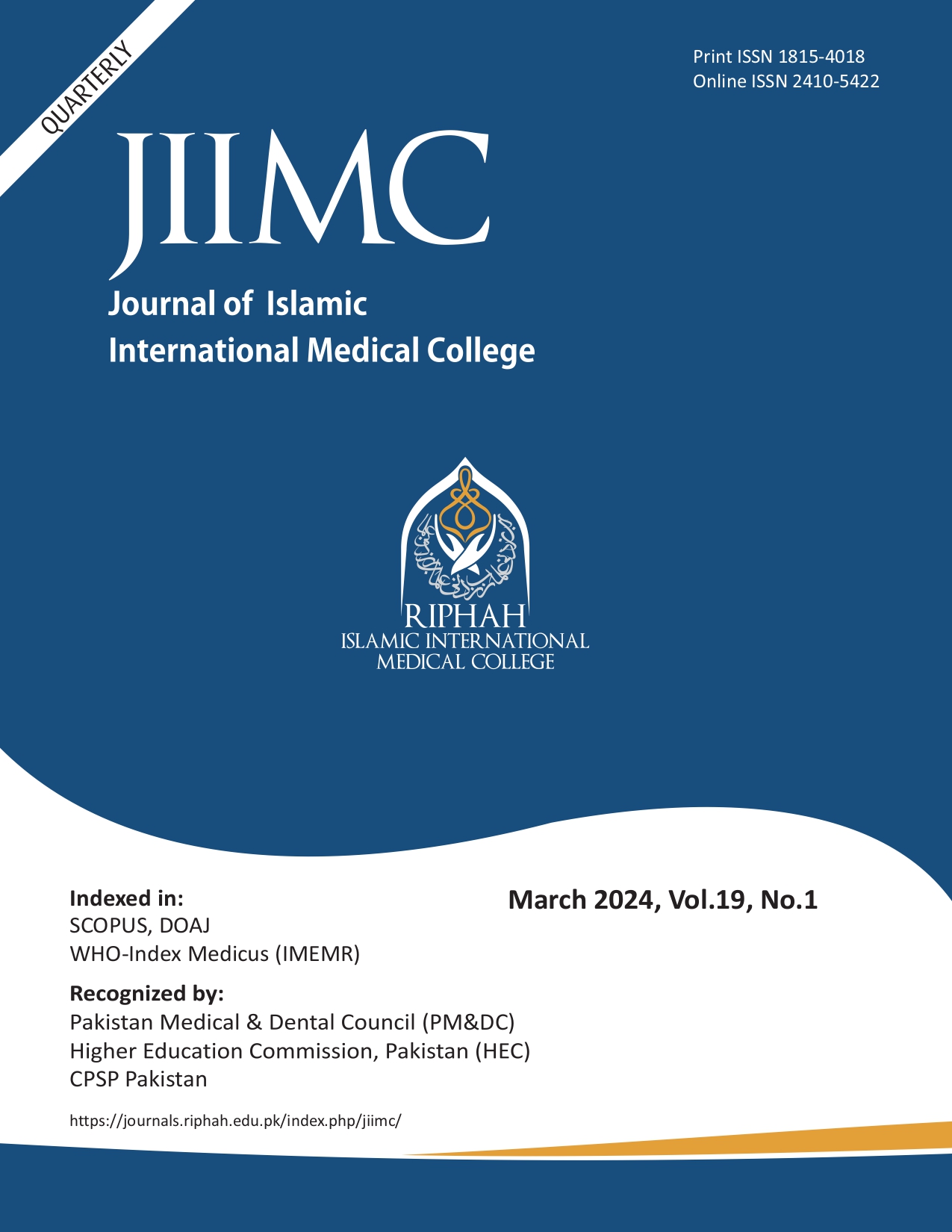Evaluation of Apolipoprotein B / Apolipoprotein A Ratio as an Alternate of Lipid Profile for Cardiovascular Risk Assessment in a Tertiary Care Hospital
Keywords:
Apo A, Apo B, Apo B/Apo A Ratio, Cardiovascular Disease, Lipid Profile.Abstract
Objective: To compare the predictive utility of serum Apo B/Apo A ratio with serum lipid profile in evaluation of cardiovascular disease (CVD) risk assessment.
Study Design: Cross sectional study.
Place and Duration of Study: Research was done at Department of Chemical Pathology & Endocrinology, Armed Forces Institute of Pathology (AFIP), Rawalpindi from 1 January 2021 to 31 March 2022.
Materials and Methods: A total of 204 patients were enrolled from a tertiary care hospital admitted for recent cardiac events and were compared with 96 healthy individuals. A serum sample was taken from all the members of both groups. Their lipid profile, Apo A, and Apo B were analyzed. Apo B/ Apo A ratio was calculated. The data was analyzed using SPSS version 21.
Results: Means of patient group for total cholesterol, LDL-cholesterol, HDL-cholesterol, VLDL-cholesterol, triglycerides, and Apo B/Apo A ratio were 4.18±1.21, 2.52±1.06, 0.83±0.34, 0.71±0.31, 1.66±0.86, 0.96±0.60 respectively, whereas means for control group were 3.99±0.54, 2.31±0.56, 1.00±0.31, 0.59±0.15, 1.22±0.33 and 0.70±0.18 respectively. Independent t-test was applied to compare means between two groups, which showed statistically significant difference between Apo B/Apo A ratio, HDL, and TG (p value <0.001). Chi-square test was applied for comparison of two groups which was statistically significant (p value <0.001).
Conclusion: Apo B/Apo A ratio is a better indicator for evaluation of cardiovascular disease as compared to lipid profile suggesting it to be a new and robust marker for CVD risk evaluation in our population.


